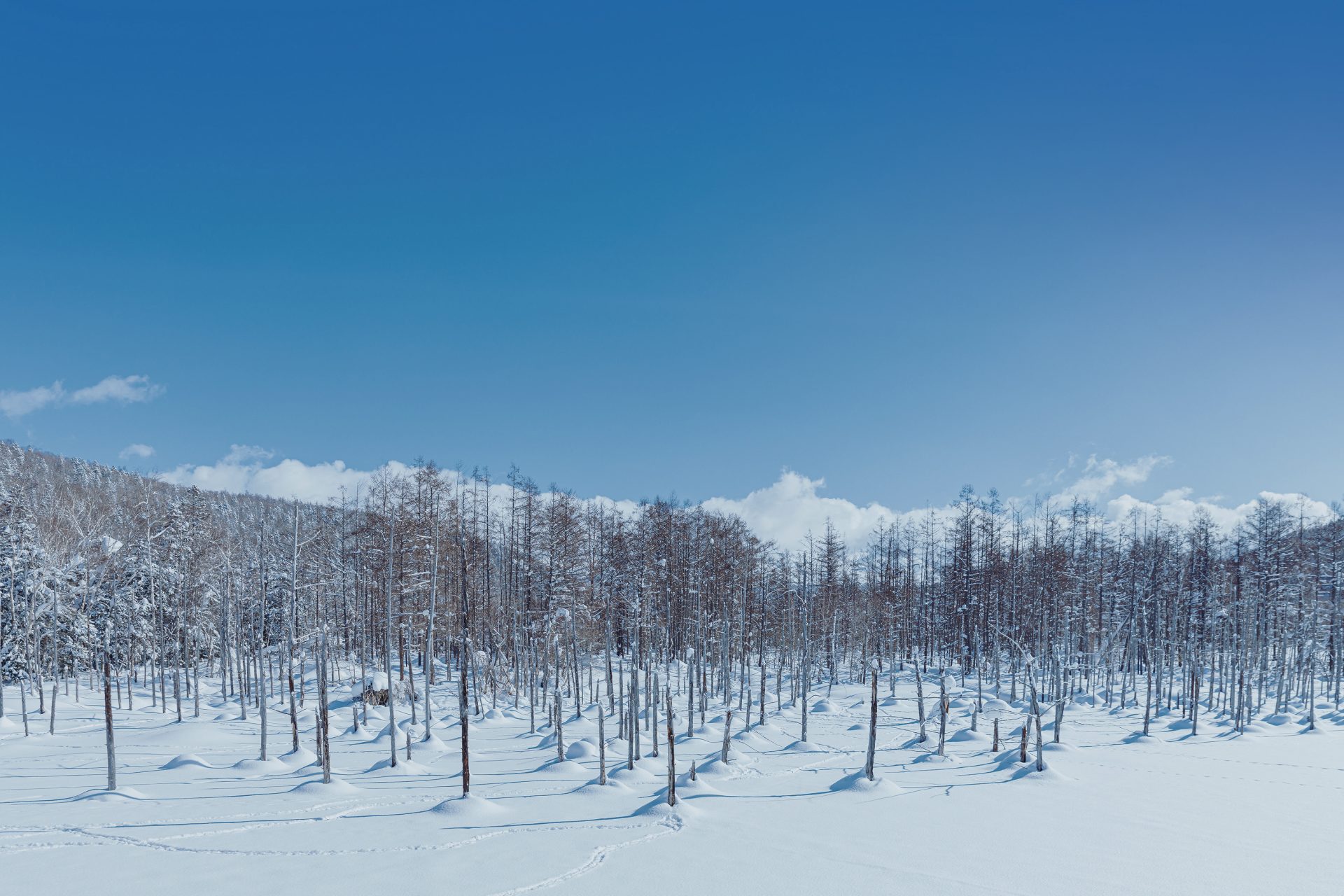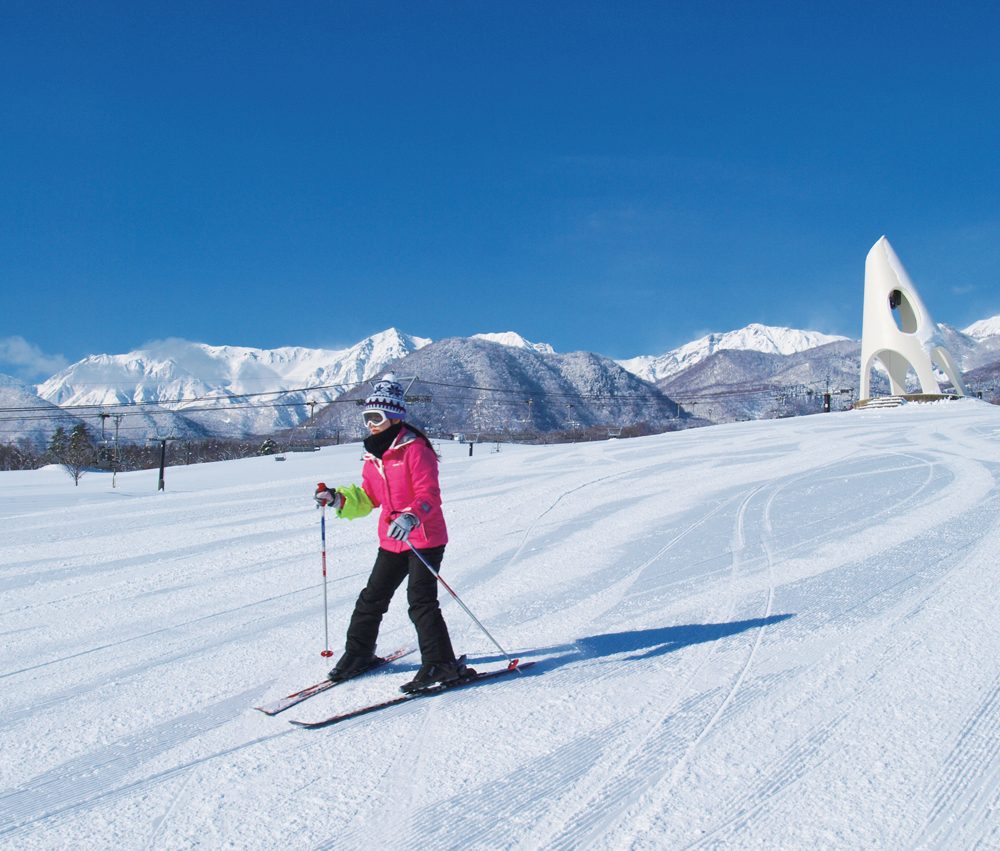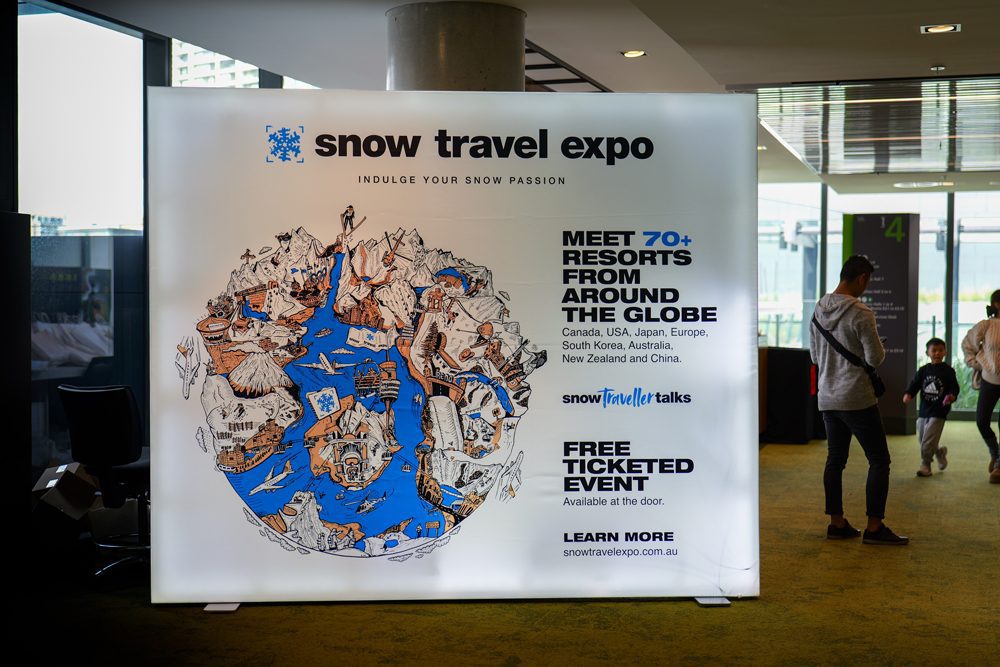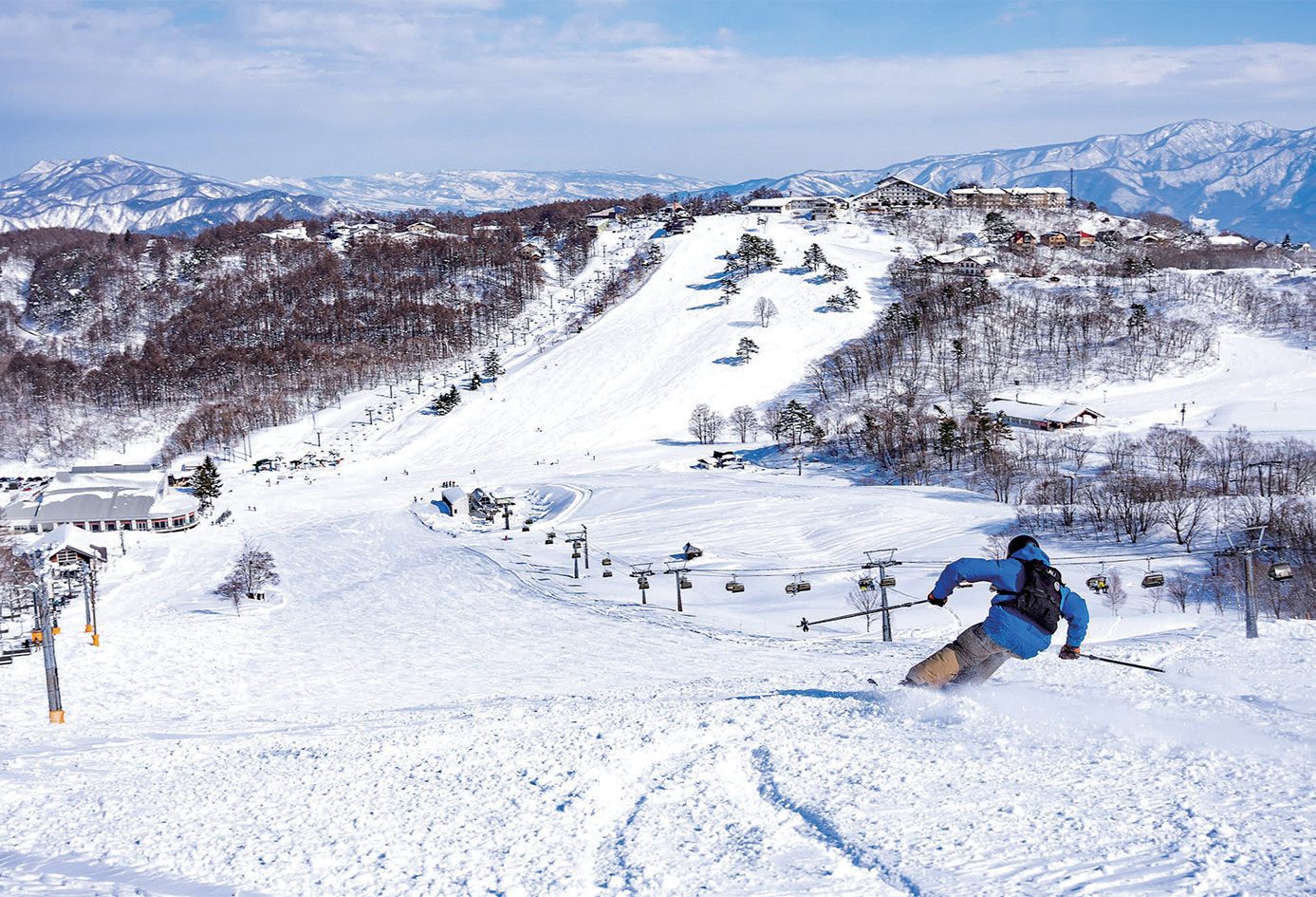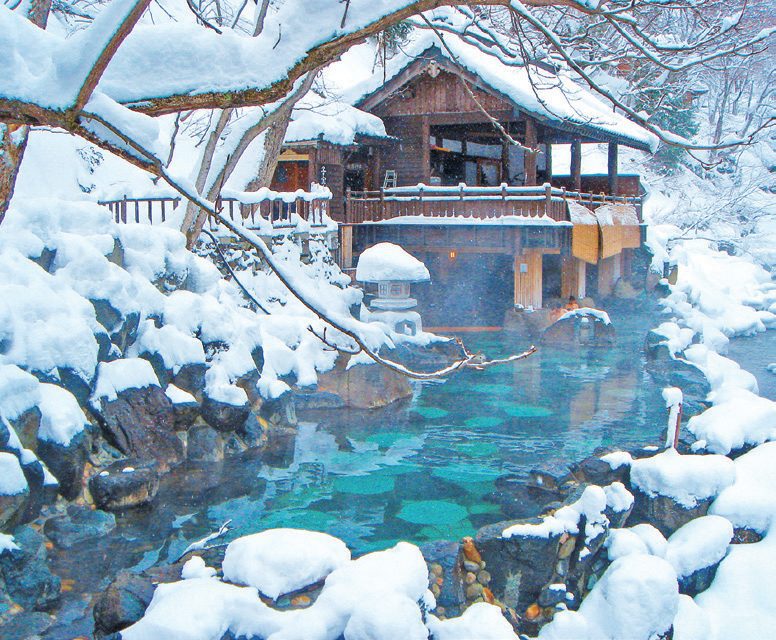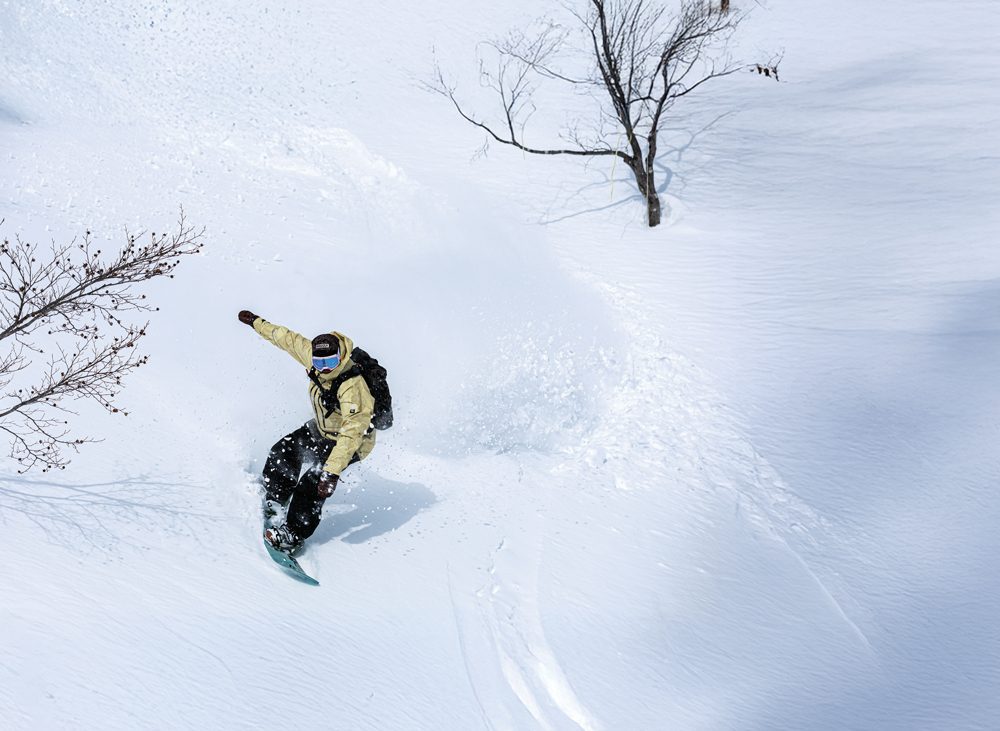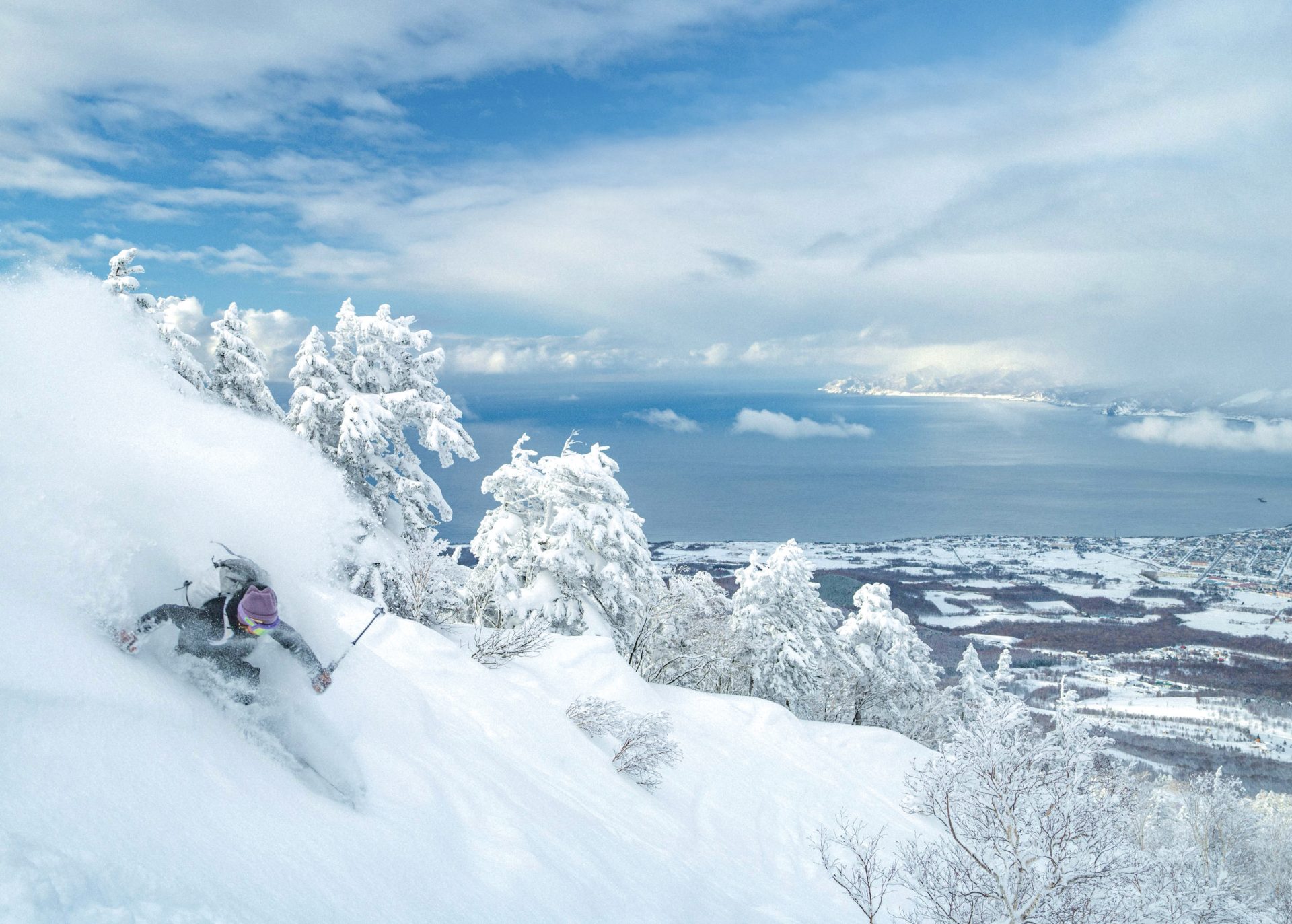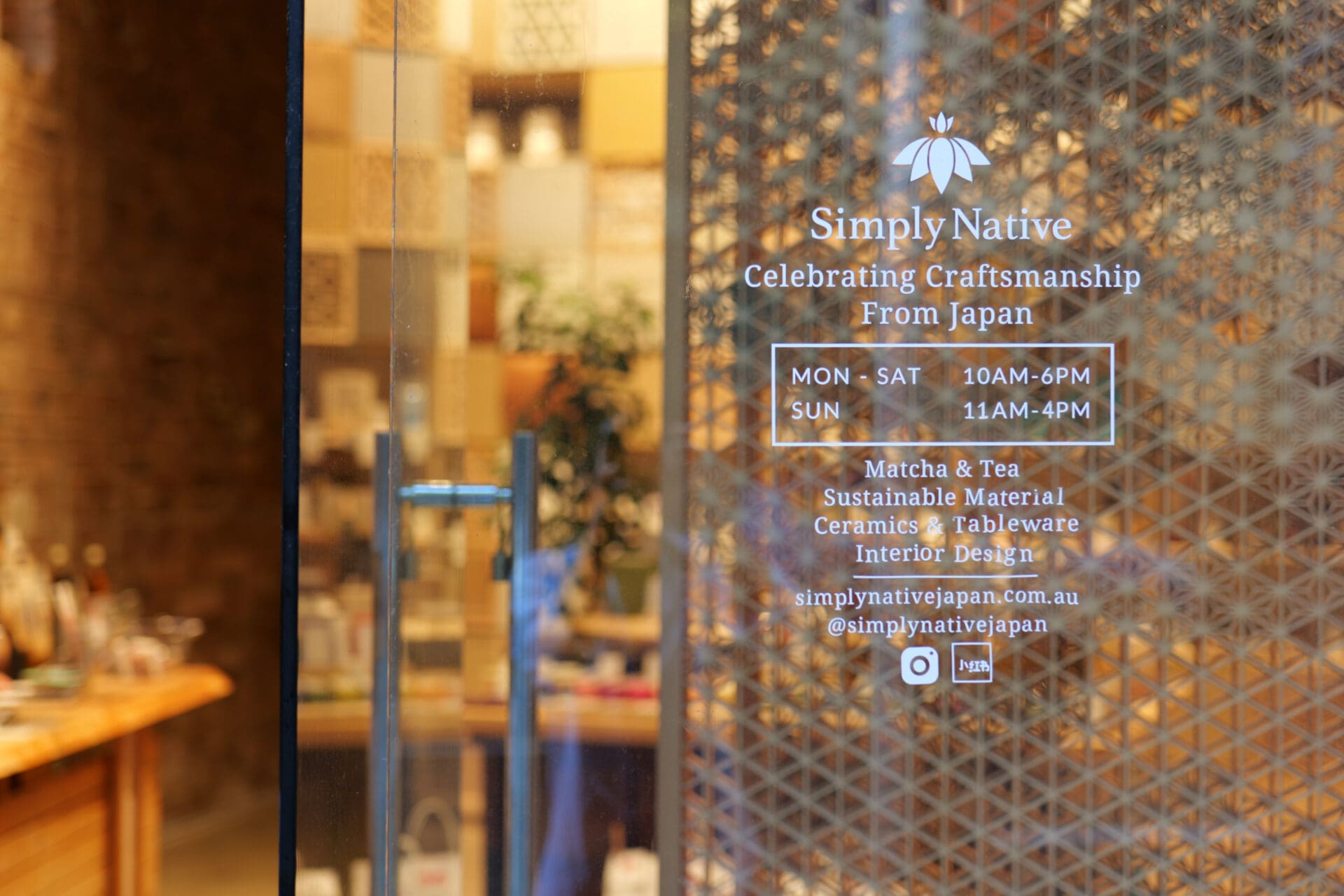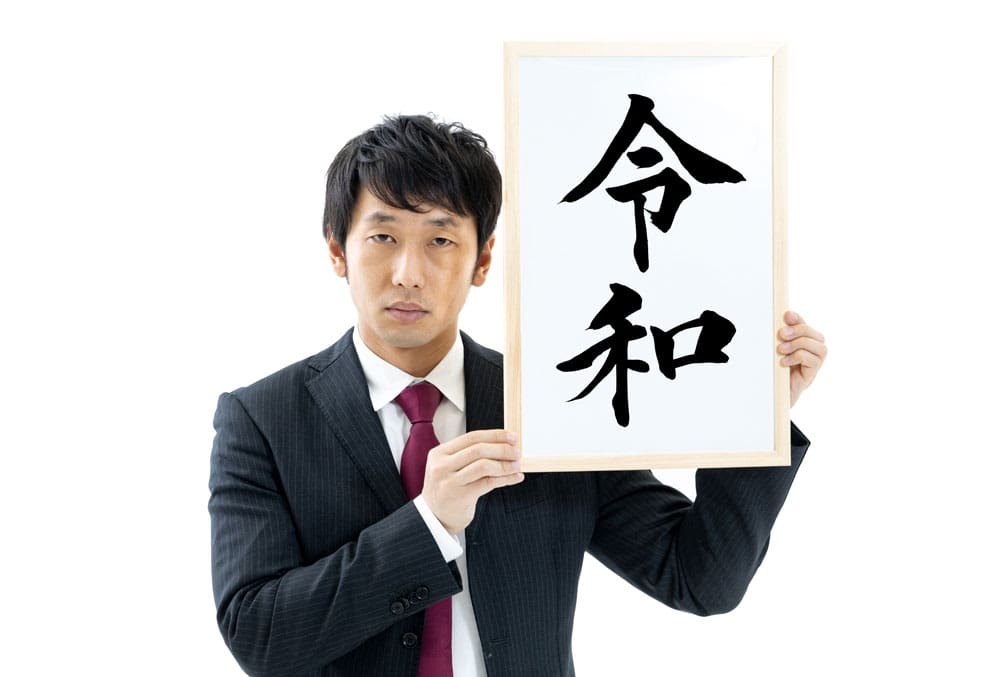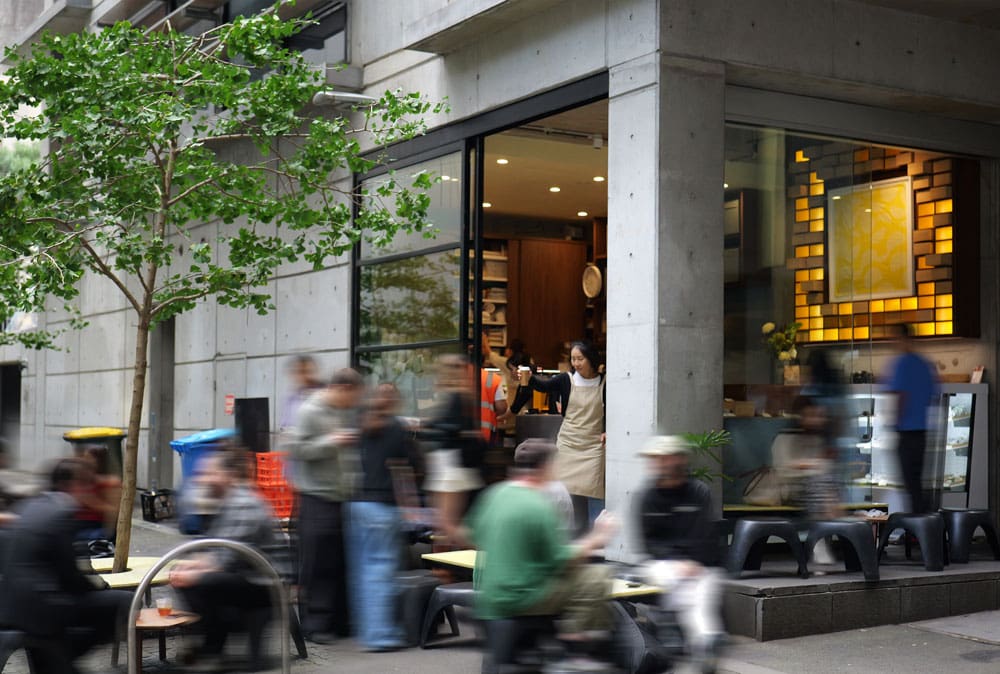
Interviewer: Yoshinori Sakuno
Photography: Yoshiharu Hoshino
“..when something is that good, you can’t keep people away from it”

Adam Liaw
Adam Liaw is a cook, writer and broadcaster. He is the host of food programs including the award-winning Destination Flavour series and The Cook Up with Adam Liaw, and has written numerous cookbooks. He lived in Tokyo from 2003 to 2010 and in 2014 he was appointed an official Goodwill Ambassador for Japanese Cuisine by the Japanese government. He is UNICEF Australia’s National Ambassador for Nutrition.
Can you tell us about your snow trip experience to the Hokkaido Powder Belt? I know you like this area and stayed in Tomamu this year.
Liaw: Tomamu is fantastic. The size of the resort is really good. There are lots of different conditions that cater to lots of different levels. Also, it’s not as crowded as a lot of other areas because there’s a wider mountain and a wider resort to cover. The off-ski, off-piste activity is really fantastic as well. They have Farm Designs there, which was one of the very first places I ever filmed in Hokkaido 12 years ago now, and it’s great to see a really authentic Hokkaido experience there rather than a broader Japan experience. So, I guess for a family holiday, we love Tomamu. It’s very simple, very selfcontained, there’s an ice village with things that you can go and visit, and it just makes life very, very easy. There’s a swimming pool as well. It’s a really ideal family ski holiday location.
There’s something for everyone, whether you’re a skier or not. So you’ve travelled to many different places in Japan, is that right?
Liaw: Yeah, I’ve skied almost everywhere in Japan. Everywhere in Japan that you can ski, I’ve probably skied there (laughs).
What sets the Hokkaido Powder Belt apart from other places?
Liaw: The food is really excellent in Hokkaido, but there are other places that have good food as well. I think hotalu street in Tomamu is amazing.
There’s also the ski-in-and-out shopping.
Liaw: The in-and-out skiing both to the hotel and to shopping—it’s a really well-planned resort. And, we go as a big group, so there are always people who want to spend every second of every day on the mountain and people who don’t want to do that. At some other resorts, that means you don’t get to see each other—the two crew groups don’t meet all day. It’s like say goodbye in the morning and then you come back when the lifts close.
Or you wait in the lodge if you’re tired of skiing.
Liaw: Yes, exactly. But here, you can still catch up and have lunch together. You can do things together. You can ski to a different part of the resort and go and do your [own thing] like have a dip in the onsen there or go swimming. It allows you to really choose your own vacation.
I’m sure you have experienced a variety of food in Japan. How did you find the selection of food in the hotel buffet and other restaurants?
Liaw: The quality is excellent. Hokkaido is known as a food destination for people within Japan, so it’s like an extra special food area, even for people in the country. That is very much reflected in what is available in the hotels and at the restaurants outside the hotel. In hotalu street in Tomamu, where I stayed, there’s a really good regional focus on the food there. It’s not just Japanese food, it’s Hokkaido-style food with a lot of different options from fine dining to very casual, and the quality is excellent.
And many of them are also kid-friendly.
Liaw: Absolutely.
So, what would you like to experience this coming season?
Liaw: You know that the powder belt area around Asahikawa is brilliant. It really is now that we’ve been there a few times. Understanding a little bit more about how to navigate that area is great and spending a bit more time there this time around than we have in the past will allow us to explore there a little more.
The gateway to the Powder Belt—the allure of Asahikawa
Let’s move on to Asahikawa, which is part of the northern area of the powder belt. Can you tell us about your snow trip to Asahikawa last year?
Liaw: Asahikawa is a very different value proposition to a lot of the other ski areas because it is a city that has every kind of normal business going about in it. You’re getting essentially a city holiday with the ability to go to the resorts and ski areas that are close to there, so it’s very different from going and staying in a resort. That’s fantastic for a lot of reasons. The zoo is amazing and the smaller resorts are obviously much smaller than the purpose-built resorts but are still really great. The snow quality is extraordinary—the best that I’ve ever seen anywhere in the world. I think it’s going to be such a popular location. It combines the best of amazing quality snow and super-accessibility and also features the benefits of being able to stay in a city and go to a different restaurant each night.
Have you had a chance to enjoy the ramen, coffee, and Japanese food in Asahikawa? If so, how did you find it?
Liaw: Yes, it was fantastic. Asahikawa is known as a ramen city and so for people who like ramen, there are lots of places to go. We did a bit of research, found some nice places, and tried a lot of different types of ramen there. There are many great restaurants in Asahikawa and plenty of great places to eat but it’s also not just ramen. There are a lot of different options because you’re in a city.
Like jingisukan? (Japanese-style BBQ lamb)
Liaw: Jingisukan oishikatta. [Jinguskan was delicious.]
Did you have good coffee there as well?
Liaw: Yes, I did. Actually, you can get quite a lot of good coffee in Japan. It’s certainly not like it used to be. I think near Asahikawa, you have Yoshinori Coffee, which is an artisan coffee roaster that’s local to the area. It’s great to get these local things, not just good coffee but good local coffee.
Asahikawa and areas nearby are still very much known for their quality of water as well, which is part of the reason why the coffee tastes so great. Most of the buildings and residential houses in Hokkaido get their water directly from the ground.
From Asahikawa to Kamui and then further beyond to the backcountry sanctuary

“One of the most beautiful places I’ve ever snowboarded”
How was your experience staying at OMO7 Asahikawa last year?
Liaw: OMO7 was fantastic. It’s a hotel that is really built for skiers and snowboarders yet it’s in a city, so there are lots of facilities. The food is great, the rooms are very nice and casual—it’s a hotel that’s made for that purpose and it does it very well.
And it’s right in the city so there’s easy access to restaurants and shopping after skiing as well. What did you think about the trip we took together to Kamui Ski Links and Asahidake?
Liaw: Kamui Ski Links was probably my favourite family day of the whole trip because our group basically almost had the whole place to ourselves. You’re getting powder snow quality off the top of a chairlift. Even around midday, you’re still getting first lines on the snow so the snow quality is just amazing.
I think it was your son’s first attempt on a black run ever that day at Kamui Ski Links, if I remember correctly.
Liaw: Yeah, it was my 9-year-old’s first time on a black run at Kamui Ski Links. The powder there takes the fear away, even though you know it’s steep. I ski and snowboard, but my preference for snowboarding is for fewer people to be around. To be able to snowboard somewhere like Kamui Ski Links, where you have great powder, accessible off the top of a chairlift, and no moguls (because you don’t have the volume of people going through to create them) made for a really great day— particularly for kids as well. The first time on a lot of the black runs at the busier resorts for kids [can be daunting] because it’s steep and covered in bumps. Christopher [my son] and Anna [my daughter] were able to get down there because the conditions were really excellent.
We then decided to leave the kids and family at the hotel and went to Asahidake with a guide. What was the experience that you had there?
Liaw: Yeah, it was one of the most beautiful places I’ve ever snowboarded. It can get very crowded there because there is only one way to the top, but usually, when I do backcountry stuff, you’re talking hours and hours of hiking and maybe one long run down. I think that day we did three runs and we could have maybe even squeezed in a fourth. There were fresh lines all morning and there were still pockets of it in the afternoon as well. So the view with the volcano allows you to hike for an hour or even five, but you can still get good runs and good lines with just half an hour of hiking. Or, if you don’t want mto hike at all, you can go straight down. It’s a really special resort for that. If you like backcountry without having to pay for helicopters or put in hours of hiking, it’s the perfect solution.
Right. I was wondering if I should even mention this because it’s such a—
Liaw: Yeah, don’t print this. I don’t want anyone else to go there (laughs).
It’s such a special place, right?
Liaw: Yeah, it really is. It’s a shame, but when something is that good, you can’t keep people away from it. So it’s better to just share it.
That’s right. Okay—last question. What are you looking forward to this year; this season at Asahikawa?
Liaw: This will be my longest ski trip ever, nearly a month in the snow. So I’m just hoping my body is up to it. But last year was quite a long trip as well. We were there for two weeks and I thought that I might have to rest a little bit. I’m not as young as I used to be, but when the snow is that good and the skiing and snowboarding feels that good, you just never want to rest.
Just keep skiing and snowboarding.
Liaw: For sure.
(November 2023, Sydney)

